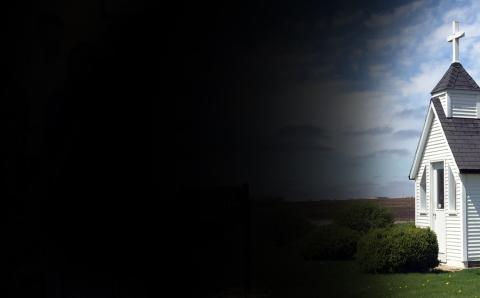During this time of the year you’ll see a lot of stars in different places. They’ll decorate Christmas trees, hang from streetlights, appear in store windows, and maybe even decorate your house. We decorate with stars to remember the Christmas star, the one that guided the wise men to the baby Jesus.
Here’s an even better way to celebrate that very special star: Go stargazing!
December can be a great month to stargaze. The air is usually crisp and clear, free of bonfire smoke and summer heat waves. This year the moon is new near the end of the month, which means it’s dark. So why not give stargazing a try then?
Stay alert for a cloudless night sometime after Christmas. Then bundle up and turn off any outside lights. Take a blanket to your backyard, lie down, and look at the sky. Give your eyes some time to adjust to the darkness. At first you may just see the brightest stars or maybe a planet or two. But after five or ten minutes you should be able to see lots of stars and pick out some constellations.
Here are some things to look for.
Star or Planet?
Here’s how to figure out if you are looking at a star or at a planet. You’ll have to go outside a few nights in a row, if possible. Try to look at the same section of the sky every night. That way, you can become a little familiar with it. Here are a couple of things to remember.
- Stars twinkle, planets shine steadily. Stars are huge balls of burning gasses. They twinkle because they’re burning. Planets are made of solid material. They do not twinkle, they simply reflect sunlight.
- Stars seem to stay in place, planets wander. That’s because stars are far, far away from Earth. We can’t see them move much from night to night. Planets are very close to Earth. We can watch them wander in the sky.
Try planet-gazing as your first step in stargazing. Go outside a few nights in a row and look for planets only. Look for one or two bright non-twinkling lights. Watch them for a few nights in a row, if possible. See if and how much they move every night. Watch planets until you can easily tell planets from the twinkling stars.
After that, you’re ready for real stargazing. A good place to start is with star pictures—also called constellations.
Star Pictures
Some groups of stars form pictures in the night sky. The stars that form each picture are usually placed close to each other. If you imagine lines connecting these stars, you can see the picture. Constellations are usually named after a common object (the Big Dipper), an animal (Ursa Major or The Bear), or a character from a myth (Orion, the hunter). Even if you don’t know the myth, you can usually find the constellation with a little bit of help.
Here's your first stargazing task: Find the constellation named Orion.
Orion is a fairly easy constellation to find. Check out this illustration so you’ll know what to look for. Then go outside and look at the southwest sky. Look for three stars in a row. They form Orion’s belt. If you look closely along his belt, you can find a small cluster of stars that form a sword hanging from the belt. Two stars above the belt mark his shoulders, and two stars below his belt mark his feet.
After you’ve found Orion, you can look for other constellations. People like to point out the Big Dipper and/or the Little Dipper. You can Google “constellation” for lots of other star pictures.
The Christmas Star
Have you ever wondered about the star that led the wise men to Jesus? Astronomers can’t agree on just what it was. Here are three ideas:
1. Maybe it was three planets close together. Because planets wander, at times they seem to move very close to each other.
2. Maybe it was a comet. According to records from the ancient Chinese, a very bright comet appeared about the time Jesus was born.
3. It could have been a nova, an exploding star. Stars don’t explode often, but they’re very bright when then do.
But maybe it was a new star, or a star that God moved especially for the wise men. God can do anything. After all, God made the stars. He guides them and calls them all by name.
Starmaker
Unscramble these words and write them on the lines below. It’s a great verse for stargazers.
stars, number, each, name, determines, calls, and, of, by, them, He, the, the
Psalm 147:4 (NIV)
Thank you, Joanne! This issue marks the final column from Joanne De Jonge. Her very first Banner article, “Mooncakes and Motorcycles,” appeared in August 1968. In 1975, she started writing the “Young Look” series. Generations of kids have looked forward to her columns ever since! Thank you for sharing your wonder and love of God’s creation over the years, Joanne.
About the Author
Joanne De Jonge is a freelance writer and a former U.S. National Park Ranger. She attends West Valley Christian Fellowship in Phoenix, Ariz.









